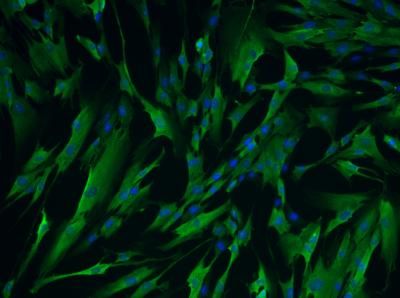Unlocking mystery of why dopamine freezes Parkinson's patients
Dopamine reshapes key brain circuits that control behavior
Advertisement
Parkinson's disease and drug addiction are polar opposite diseases, but both depend upon dopamine in the brain. Parkinson's patients don't have enough of it; drug addicts get too much of it. Although the importance of dopamine in these disorders has been well known, the way it works has been a mystery.
New research from Northwestern University's Feinberg School of Medicine has revealed that dopamine strengthens and weakens the two primary circuits in the brain that control our behavior. This provides new insight into why a flood of dopamine can lead to compulsive, addictive behavior and too little dopamaine can leave Parkinson's patients frozen and unable to move.
"The study shows how dopamine shapes the two main circuits of the brain that control how we choose to act and what happens in these disease states, " said D. James Surmeier, lead author and the Nathan Smith Davis Professor and chair of physiology at the Feinberg School. The paper is published in Science.
These two main brain circuits help us decide whether to act out a desire or not. One circuit is a "stop" circuit that prevents you from acting on a desire; the other is a "go" circuit that provokes you to action. These circuits are located in the striatum, the region of the brain that translates thoughts into actions. In the study, researchers examined the strength of synapses connecting the cerebral cortex, the region of the brain involved in perceptions, feelings and thought, to the striatum, home of the stop and go circuits that select or prevent action.
Scientists electrically activated the cortical fibers to simulate movement commands and boosted the natural level of dopamine. What happened next surprised them. The cortical synapses connecting to the "go" circuit became stronger and more powerful. At the same time, dopamine weakened the cortical connections in the "stop" circuit.
"This could be what underlies addiction," Surmeier said. "Dopamine released by drugs leads to abnormal strengthening of the cortical synapses driving the striatal 'go' circuits, while weakening synapses at opposing 'stop' circuits. As a result, when events associated with drug taking - where you took the drug, what you were feeling - occur, there is an uncontrollable drive to go and seek drugs."
"All of our actions in a healthy brain are balanced by the urge to do something and the urge to stop," Surmeier said. "Our work suggests that it is not just the strengthening of the brain circuits helping select actions that is critical to dopamine's effects, it is the weakening of the connections that enable us to stop as well. "
In the second part of the experiment, scientists created an animal model of Parkinson's disease by killing dopamine neurons. Then they looked at what happened when they simulated cortical commands to move. The result: the connections in the "stop" circuit were strengthened, and the connections in the "go" circuit were weakened.




























































